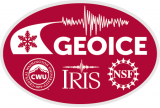Rechargeable Batteries
Rechargeable batteries are used for summer-only and year-round polar seismic experiments. For summer-only experiments, due to the roughly continuous sunlight, stations can be powered solely with rechargeable batteries.
For PASSCAL Polar experiments the preferred rechargeable battery is an AGM (Absorbent Glass Mat) battery manufactured by Concorde Battery Corporation. Both the Sun Xtender PVX-420T and PVX-560T work well for a summer deployment where only a limited amount of storage is required for cloudy days.
Primary Batteries
Primary batteries are usually not necessary for summer only deployment due to the ample amount of sunlight available.


